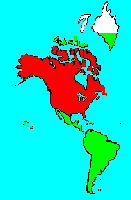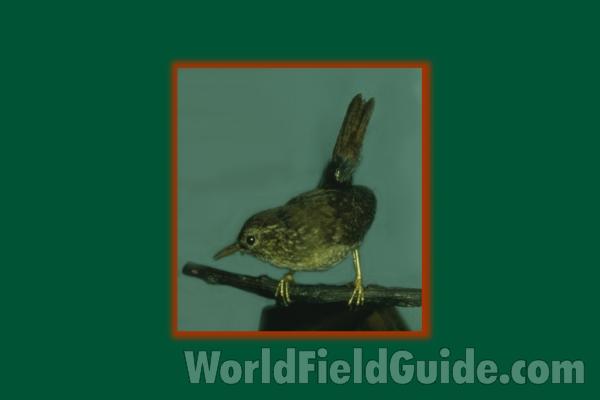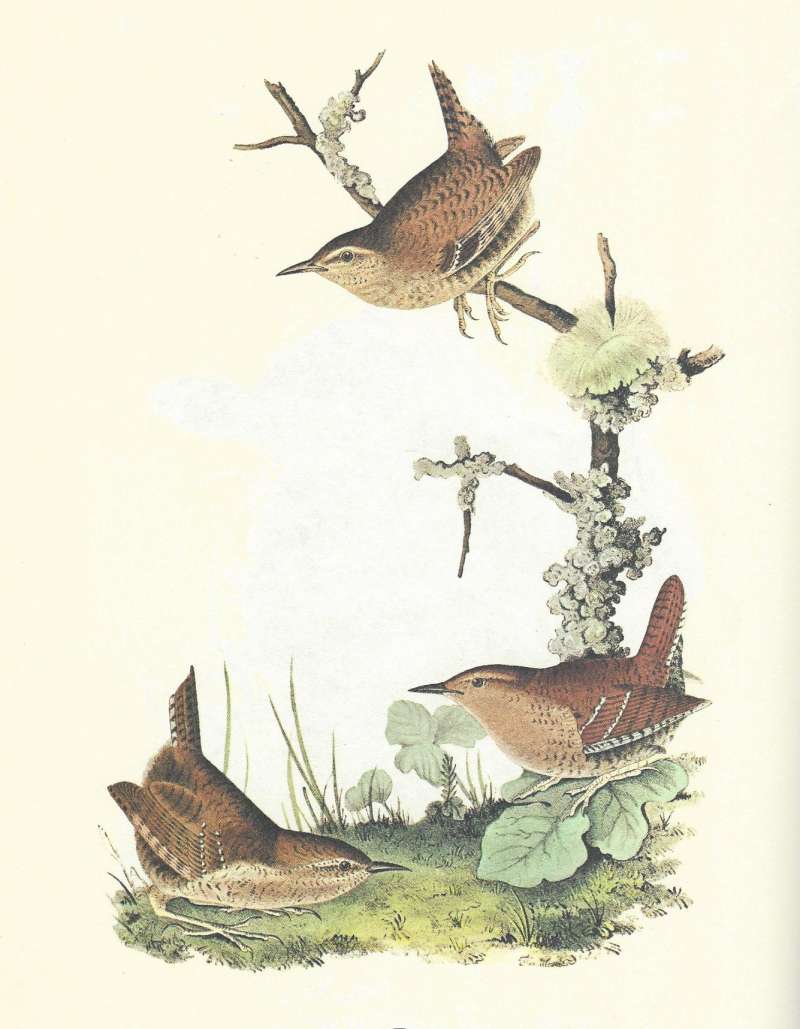SPECIES INFO
Winter Wren (United States) or Common Wren (Europe) (Troglodytes troglodytes) is found in both the New and Old World (older references sometimes call the New World form Nannus hiemalis). Clements in 2007 showed a grand total of 43 subspecies for both the Old and New World combined.
There are numerous subspecies in this complex in both the New and Old World. Clements in 2007 showed a grand total of 43 subspecies. There are 29 found in the Old World from Iceland to Japan and in the New World there are 14 sub species from the Aleutians to California and east to NE Canada and Georgia.
Although it migrates south, it generally breeds in the New World in Canada or the north woods of the United States. Its size, three and a half inches to four and a quarter inches, helps separate this wren from the House Wren (T. aedon) which is somewhat larger. Both T. aedon and T. troglodytes have short tails.
In the New World there are 14 subspecies for T. troglodytes found from the Aleutians to California and east to NE Canada and Georgia. The subspecies found in eastern North America as far west as the Great Plains is called Troglodytes troglodytes hiemalis. (This is the subspecies displayed here.)
Other subspecies include: Subspecies pacificus from coastal SW Alaska south to California, subspecies salebrosus from central British Columbia to Montana and eastern Oregon, subspecies pullus of the southern Appalachian Mountains, and subspecies muiri and obscurior coastal northern California and coastal central California respectively.The common wren genus (Troglodytes) is found almost everywhere in the Northern Hemisphere. The genus is also found as far south as Argentina and Chile in the New World. This appears absent in Australia, Indonesia, and most of central and southern Africa. There are about 10 different species. There are numerous subspecies. These are generally very small brownish birds.
Wrens (Family Troglodytidae) are a group of 59 New World species that range from northern Canada south to Chile and Argentina. The Common Wren, however, is also found in the Old World. It has been established there for quite some time in that there are almost 30 different geographical races.
In most modern bird taxonomies, the perching birds (Passeriformes) is treated as a single order. This large order has about 5739 different species. Recently, Monroe and Sibley in 1993 have divided this large order into six main divisions. To help our users navigate this gigantic number of species, we have arbitrarily placed these 6 different divisions at the order level.
This division can be referred to as:
Order Passeriformes (5739 species)
Suborder Passeri (4580 species)
Parvorder Passerida (3473 species)
Superfamily Sylvioidea (1204 species)
In most modern bird taxonomies, the perching birds (Passeriformes) is treated as a single order. This large order has about 5739 different species. A common characteristic of this order is three forward toes and one reverse pointing toe. Most of species are also characterized by a tendon locking mechanism that permits their feet to lock onto branches when they relax. Recently, Monroe and Sibley in 1993 have divided this large order into six main divisions. To help our users navigate this gigantic number of species, we have arbitrarily placed these 6 different divisions at the order level.
This division can be referred to as:
Order Passeriformes (5739 species)
Suborder Passeri (4580 species)
Parvorder Passerida (3473 species)
This large Passerida group can be divided into 3 additional groups as follows:
Superfamily Muscicapoidea (613)
Superfamily Sylvioidea (1204)
Superfamily Passeroidea (1656) 613 + 1204 + 1656 =3473
Aves contains about 8,650 different species of living birds known to science. Each year about one new species is discovered in some remote rain forest or remote island. In addition, scientists have been raising many subspecies to full species status which may raise the species count to 10,000. Birdlife recognizes 10,027 species as of 2011.
However, each year about one species goes extinct. The rate of extinction is increasing, and the rate of new discovery is decreasing, so that the number of bird species will soon begin to decline rapidly. Although different taxonomists would organize the birds differently, there are approximately twenty-seven orders of birds. These orders are broken down into about one hundred and fifty-five different families.
Recent research of the genetic structure of some of the shore birds and owls would indicate that the present organization of orders and families should have some modification.
The birds are a worldwide group of animals that are characterized by having the front limbs modified into wings that are used for flying. Perhaps the most unique feature of the birds is the feathers. These feathers are made up of a central support called a quill and a series of small filaments that are hooked together as barbs.
For many years it was believed that Archaeopteryx discovered in Bavaria was the oldest bird from about 150 million years ago. However, in l986, Sankar Chattterjee, a Texas paleontologist, reportedly discovered a bird in the genus Protoavis that lived about 225 million years ago.
When this project was begun in 1978, we used Austin & Singer for bird taxonomy. Since then, we have adopted many changes, but have kept some older concepts that are still found widely in the literature. Recently, we have used Clements and Howard & Moore. Very recently, we have used Monroe and Sibley for the higher taxonomy of the perching birds.
Backboned Animals (Phylum Chordata) are the most advanced group of animals on earth. These animals are characterized by having a spinal cord or backbone. Most members have a clearly defined brain that controls the organism through a spinal cord. Fish, amphibians, reptiles, birds, and mammals are in this phylum.
Currently, some taxonomists believe that the fish should be divided into two groups (sharks and regular fishes) and that there are some other primitive groups in the phylum such as hagfish or lampreys.
Animal Kingdom contains numerous organisms that feed on other animals or plants. Included in the animal kingdom are the lower marine invertebrates such as sponges and corals, the jointed legged animals such as insects and spiders, and the backboned animals such as fish, amphibians, reptiles, birds, and mammals.






